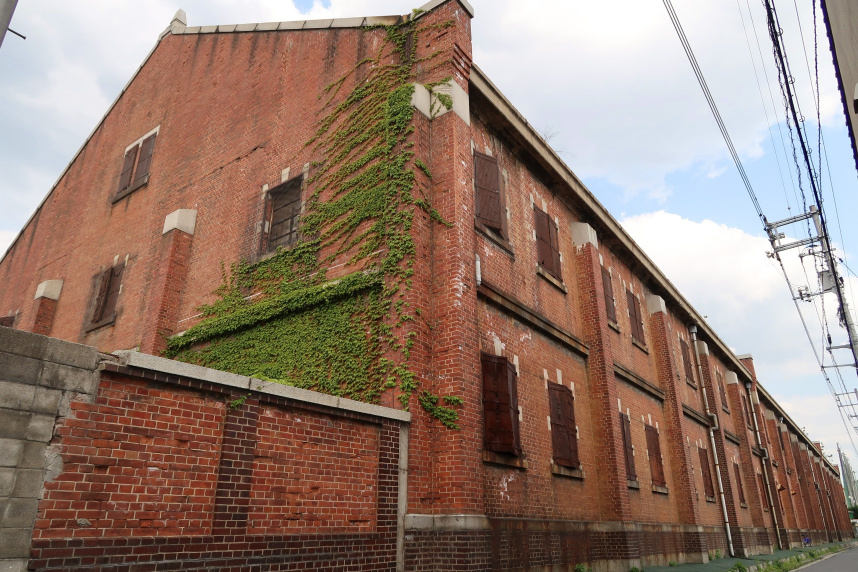 Commentary from Japan Tourism Agency
Commentary from Japan Tourism AgencyHiroshima Army Clothing Depot
Table of Contents

These four sizable warehouses, situated in the south of the city 2.7 kilometers from the A-bomb blast’s hypocenter, are the remnants of a larger complex of similar buildings used during World War II as a depot for the manufacture, repair, storage, and distribution of Japanese Imperial Army uniforms. The warehouses, constructed in 1913, are each 94 meters in length, and are early examples of Western-style red brick architecture in Japan, having been completed a year before the much-feted red brick facade of Tokyo Station. Because of Japan’s considerable seismic activity, however, the warehouses’ red brick exteriors hide reinforced concrete walls. Their distance from ground zero enabled the buildings to remain standing after the atomic bombing of August 6, 1945, though their roofs, along with smaller fixtures, were severely damaged. At all but the easternmost building, scorched, dented, or otherwise damaged external iron doors can still be seen.
In the days and weeks immediately following the bombing, the buildings were pressed into service as an emergency relief station. With both medical supplies and knowledge of the atomic nature of the attack being scant, however, many of the citizens treated here died soon afterward. Following the war’s end, the structures were used in succession as school buildings, warehouses for a shipping company, and student dormitories.